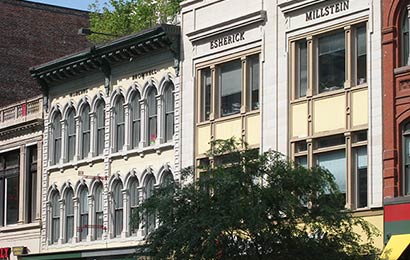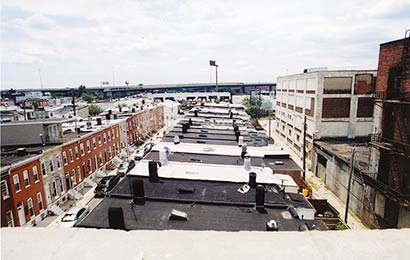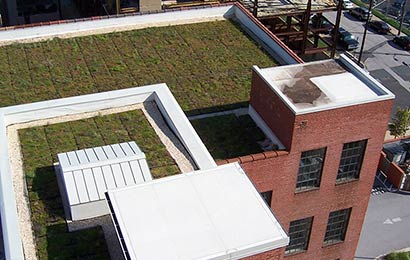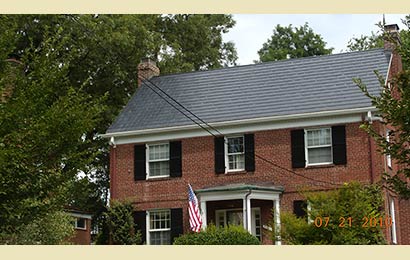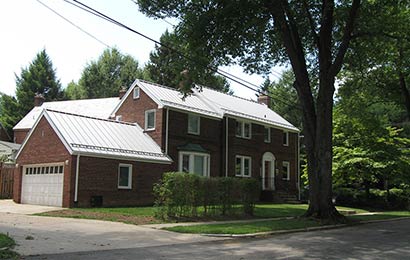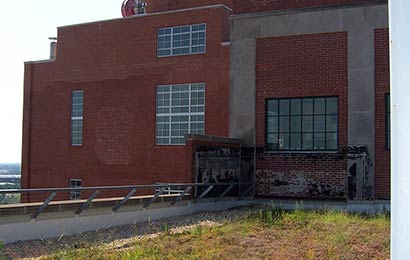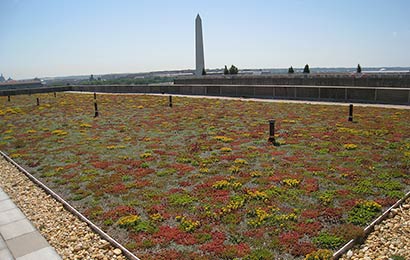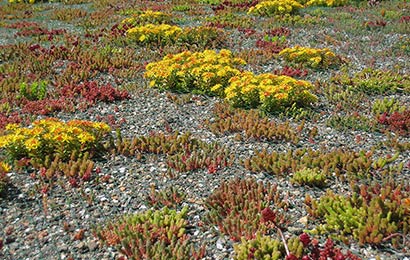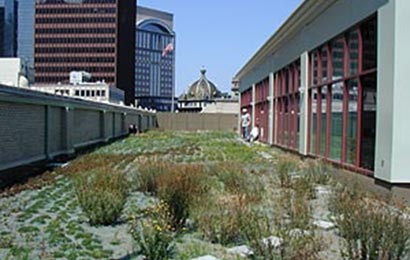THE SECRETARY OF THE
INTERIOR’S STANDARDS FOR
REHABILITATION &
ILLUSTRATED
GUIDELINES ON
SUSTAINABILITY
FOR REHABILITATING
HISTORIC BUILDINGS
Roofs—Cool Roofs and Green Roofs
Recommended
Not Recommended
Retaining and repairing durable, character-defining historic roofing materials in good condition.
Replacing durable, character-defining historic roofing materials in good condition with a roofing material perceived as more sustainable.
Analyzing whether a cool roof or a green roof is appropriate for the historic building.
Installing a cool roof or a green roof on a flat-roofed historic building where it will not be visible from the public right of way and will not negatively impact the building’s historic character.
Installing a cool roof or a green roof without considering whether it will be highly visible from the public right of way and will negatively impact the building’s historic character.
Selecting appropriate roofing materials and colors when putting a new cool roof on the historic building.
Installing a cool roof that is incompatible in material or color with the historic building.
Ensuring that the historic building can structurally accommodate the added weight of a green roof and sensitively improving the structural capacity, if necessary.
Adding a green roof that would be too heavy and would damage the historic building or supplementing the structural capacity of the historic building in an insensitive manner.
Ensuring that the roof is water tight and that roof drains, gutters and downspouts function properly before installing a green roof.
Installing a green roof without ensuring that the roof covering is water tight and that drainage systems function properly.
Including a moisture-monitoring system when installing a green roof to protect the historic building from added moisture and accidental leakage.
Selecting sustainable native plants that are drought resistant and will not require excessive watering of a green roof.
Selecting appropriately-scaled vegetation for a green roof that will not grow so tall that it will be visible and detract from the building’s historic character.
Selecting vegetation for a green roof that will be visible above the roof or parapet.



